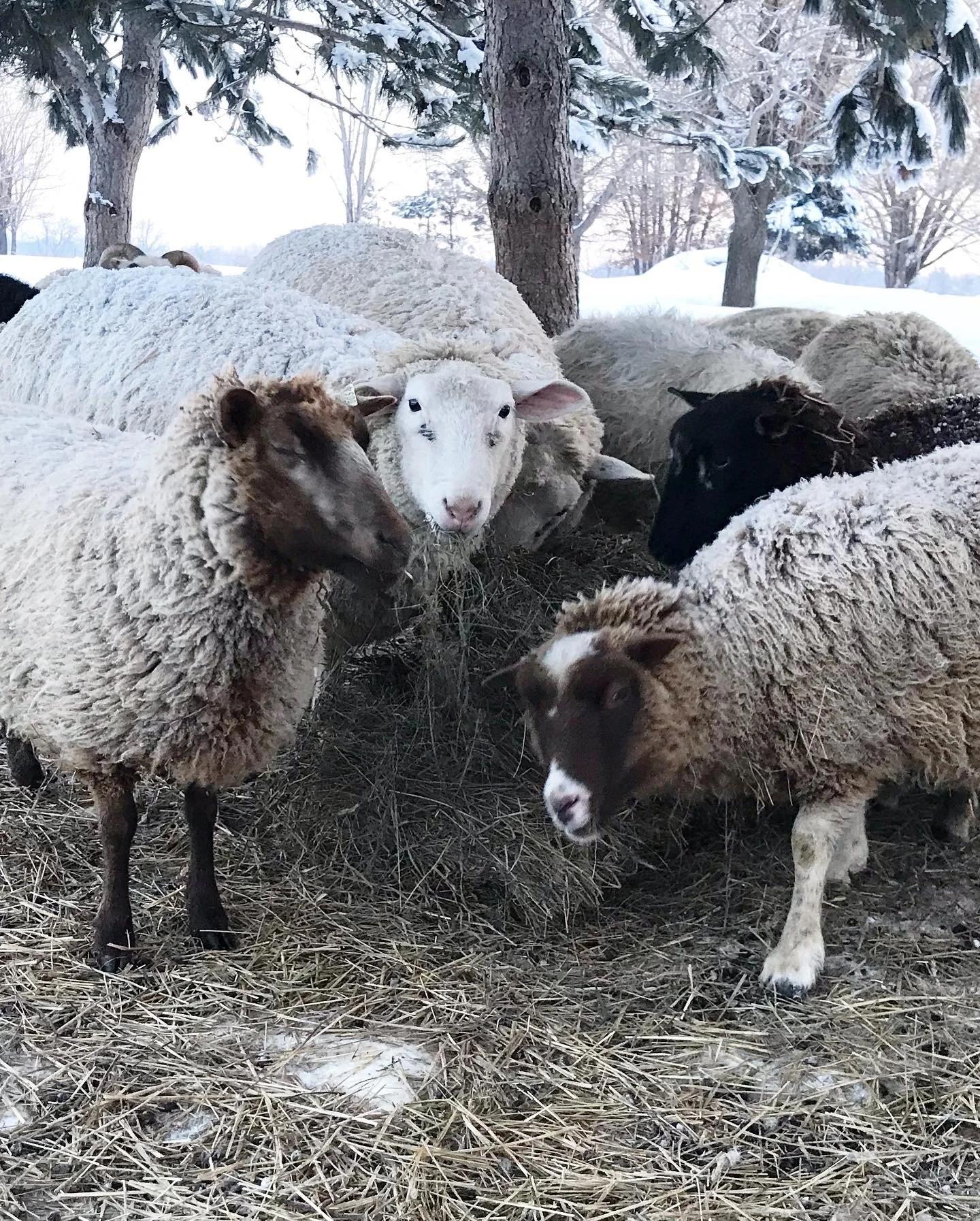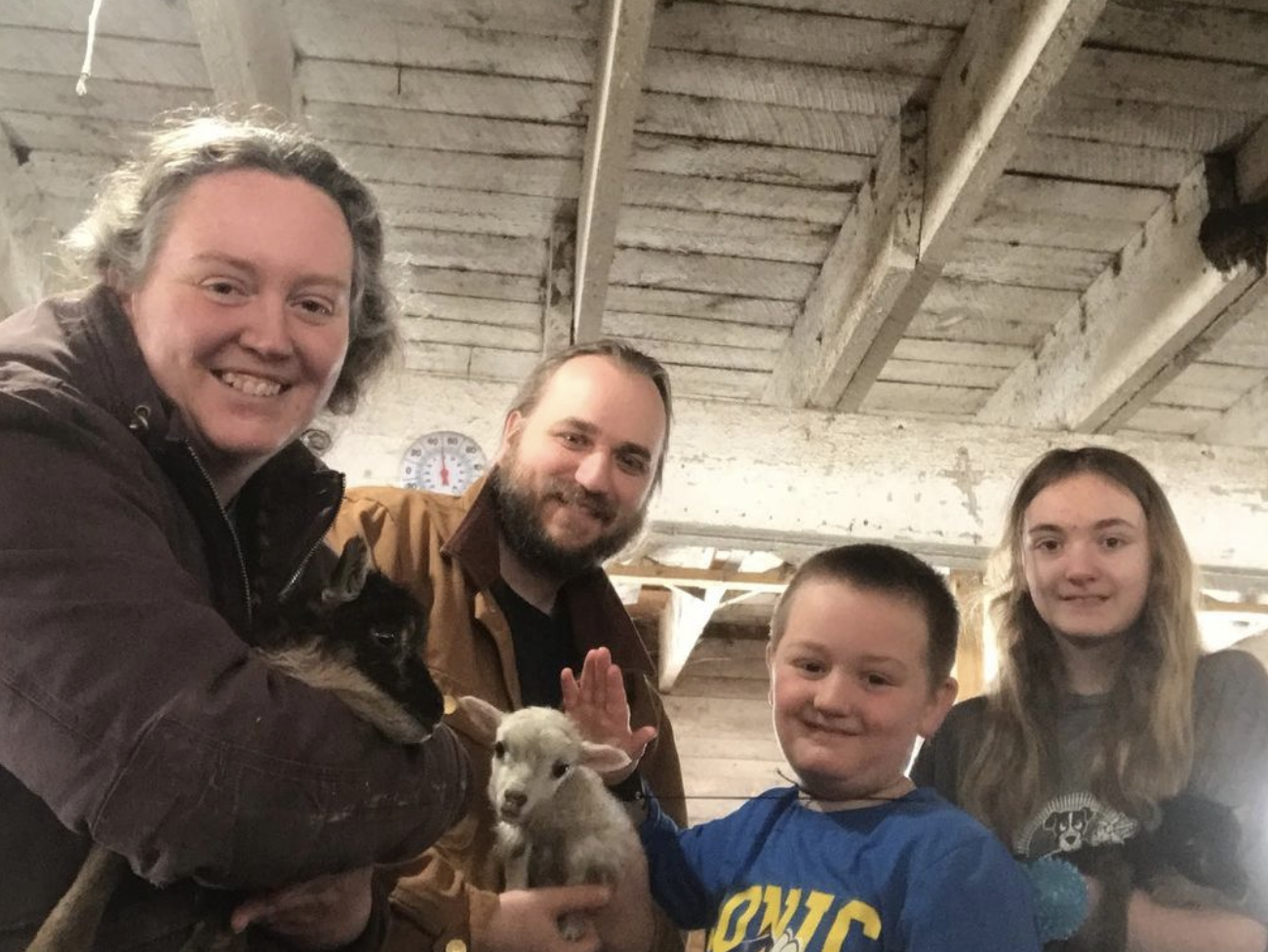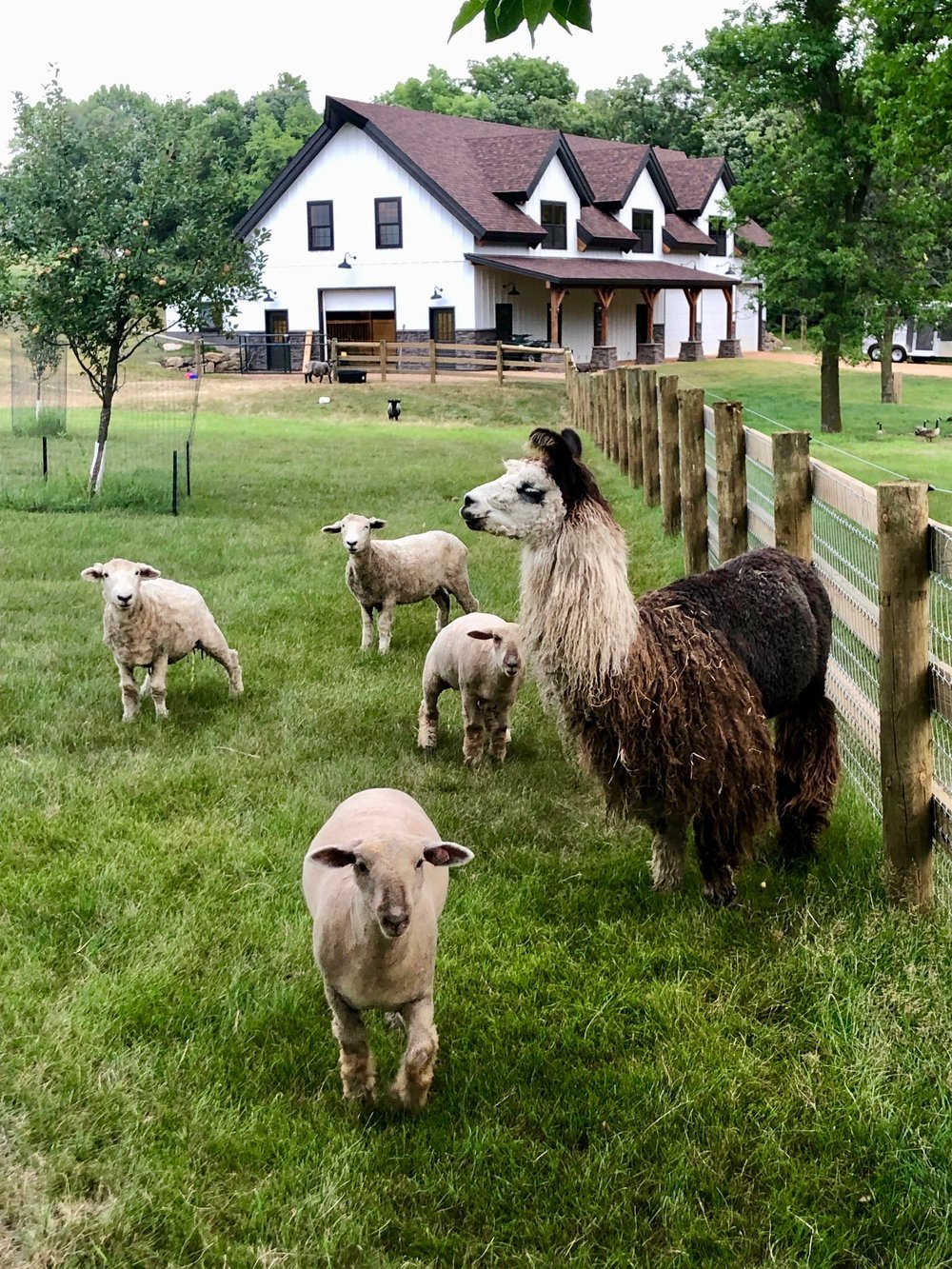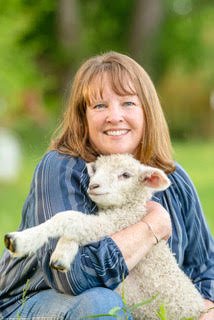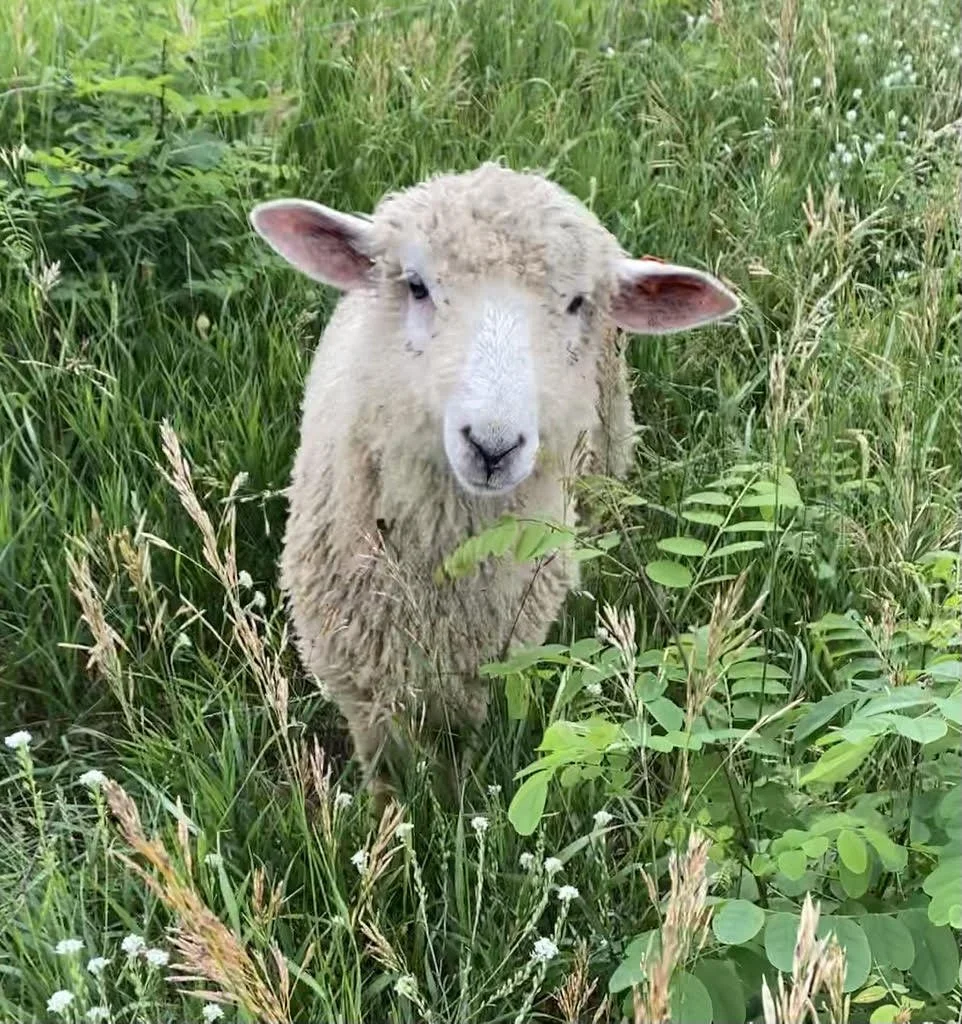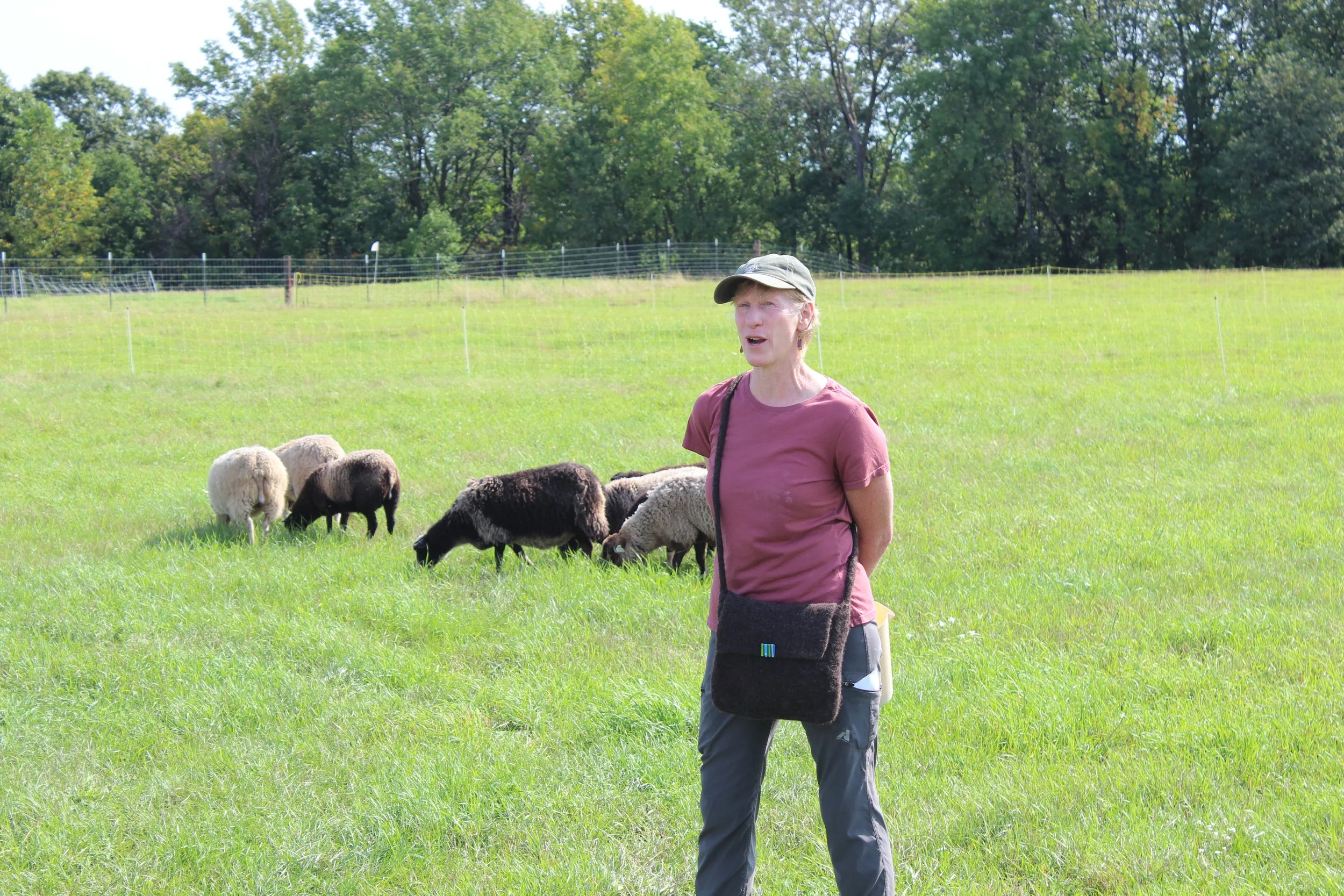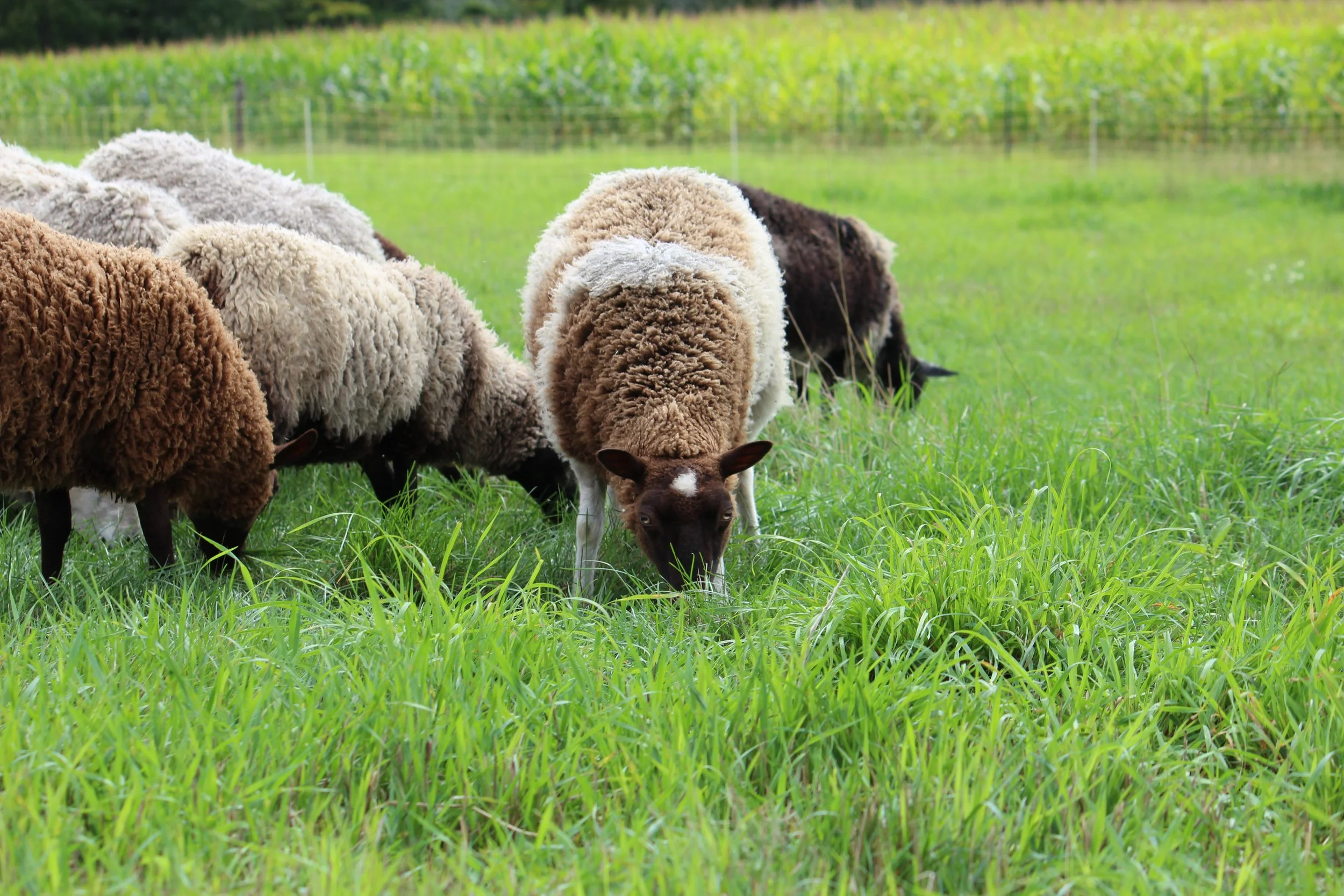written by Phoebe Eisenbeis
Twisted Oak Farm & Woolen Mill
How did you get into farming and shepherding, what was your path to this moment now?
My path started when I started crocheting again 10 years ago. During that time I was making all sorts of hats and scarves that I would sell in my booth at the New Hope Farmers Market. When the pandemic hit, just like many people looking for a creative output, I took a beginning knitting class through Amazing Threads in Maple Grove, MN.
After learning how to knit, my husband and I started looking again for a property outside of the Twin Cities. While exploring paths to take after purchasing our property, we started to explore the idea of dual purpose animals and sheep came to the fore front of that conversation. I figured if we were going to get into sheep, then perhaps I should learn more about wool and how it is processed. Mary at Anoka Fiber had me hooked on spinning and Theresa at Get Bentz was our gateway to becoming a Shepard.
Why did you get involved with Three Rivers Fibershed? And can you talk a little about how you align with the mission and goals of the Fibershed?
Purchasing our property, we knew that we wanted to farm in a sustainable manner. We started researching and ended up on the Three Rivers Fibershed website. It was an amazing feeling to find such a community that also wanted a sustainable future for the textile industry. Our goals here on the property are to rebuild our soil health and utilize our animals to their fullest potential.
Can you share about the animals you are raising on your land? And anything unique or exciting about them?
During the summer months, our sheep move throughout four pastures. We love our four-legged lawn mowers and once a month they are rotated in between our garden plots to keep the grass at a manageable level. We over winter our animals on pasture so we do not have bedding with manure to use in the garden, but their fertilization during grazing is a great addition to the soil that has been used over the years for heavy grazing and haying purposes. Not only do we raise Shetland and Icelandic sheep, but we own cows, chickens and a small pack of work dogs. We also run a small wool mill that was opened in Spring of 2022. We can process fiber up to the roving state for fiber farmers and artists. The mill has been an amazing opportunity to open here on the property.
What is one of your favorite parts about being a shepherd, working with animals and the land?
The life cycle. Watching the lambs start their life on this property, graze the land which nurtures their body and the final stage of nurturing our bodies and the families of customers that choose to support our farm. Not all Shepards who raise animals choose this outcome for their animals, but in the end, we are fortunate enough to be here everyday to care for the animals and in return they care for us.
Anything else you’d like to share?
We host once a month gatherings in the summer months here on the property for people to come and share recent projects they are working on, sit and enjoy the company of others and our sheep. We also offer classes throughout the year. Our store front is open Friday, Saturday and Sunday during the summer and the public is also welcomed to visit during the winter via appointment. Our mill is available for custom processing. You can find us at the Spooner Farmers Market and Perlick Distillery during the market season.
